Key Concepts in Biogeography
1. Distribution Patterns
Biogeographers study the patterns of species distribution at different scales, including global, regional, and local. They investigate the factors influencing the distribution of species, such as climate, geological history, and human activities.2. Biodiversity Hotspots
Biogeographers identify areas with exceptionally high levels of biodiversity, known as biodiversity hotspots. These regions are prioritized for conservation efforts due to the rich variety of species and the threats they face.3. Island Biogeography
The study of how species colonize and establish populations on islands is a key aspect of biogeography. Island ecosystems provide valuable insights into the processes of speciation, extinction, and adaptation.4. Historical Biogeography
Understanding the geological history of Earth is crucial to explaining the current distribution of species. Biogeographers use evidence from the fossil record and geological events to reconstruct the evolutionary history of biotas.5. Conservation Biogeography
Biogeographers play a vital role in conservation efforts by identifying areas of high conservation value and developing strategies to protect and restore biodiversity.Study Tips
1. Understand the Factors
Learn about the factors that influence species distribution, such as climate, topography, and habitat availability. Understand how these factors interact to shape the distribution patterns of different species.2. Explore Case Studies
Explore case studies of specific regions or ecosystems to see how biogeographic principles apply in real-world contexts. Investigate how human activities impact the distribution of species and ecosystems.3. Use Maps and Data
Practice interpreting maps and spatial data to understand the distribution of species and biodiversity hotspots. Utilize GIS (Geographic Information Systems) tools to analyze and visualize biogeographic patterns.4. Connect with Ecology and Evolution
Recognize the connections between biogeography, ecology, and evolution. Understand how ecological processes and evolutionary history contribute to the distribution of species across different environments.5. Engage in Fieldwork
.◂Science Worksheets and Study Guides First Grade. Weather
Study Guide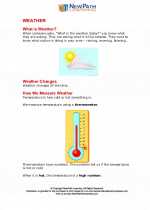 Weather
Weather  Activity Lesson
Activity Lesson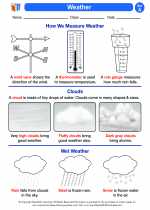 Weather
Weather  Worksheet/Answer key
Worksheet/Answer key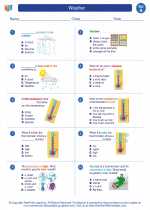 Weather
Weather  Worksheet/Answer key
Worksheet/Answer key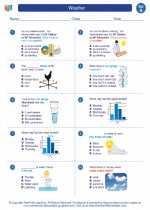 Weather
Weather  Worksheet/Answer key
Worksheet/Answer key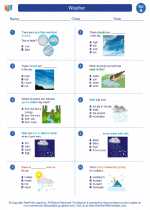 Weather
Weather  Worksheet/Answer key
Worksheet/Answer key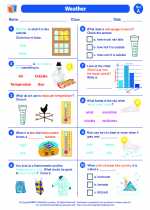 Weather
Weather  Vocabulary/Answer key
Vocabulary/Answer key Weather
Weather  Vocabulary/Answer key
Vocabulary/Answer key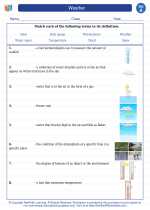 Weather
Weather 

 Activity Lesson
Activity Lesson
 Worksheet/Answer key
Worksheet/Answer key
 Worksheet/Answer key
Worksheet/Answer key
 Worksheet/Answer key
Worksheet/Answer key
 Worksheet/Answer key
Worksheet/Answer key
 Vocabulary/Answer key
Vocabulary/Answer key
 Vocabulary/Answer key
Vocabulary/Answer key

The resources above cover the following skills:
Earth Systems Science
Earth's materials can be compared and classified based on their properties. Students can:
Identify and represent similarities and differences such as the texture, size, color, and shape of various materials on Earth